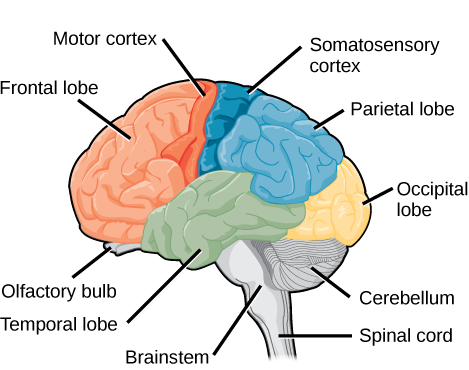Chapter 15 – Neurological system assessment
Introduction to the Neurological System
The neurological system is important to assess because it is responsible for relaying messages from all body systems to the brain and spinal cord, and from the brain and spinal cord back out to all body systems. It is involved in regulating:
- Senses (e.g., seeing, hearing, tasting, smelling, touching).
- Motor function (e.g., walking, balance, coordination).
- Cognition (e.g., level of consciousness, thinking).
As a nurse, your assessment of the neurological system provides information about the functioning of this system and potential cues that may require your action. This chapter focuses on the adult and adolescent (older child) population; neurological assessment of the newborn/infant/young child is beyond the scope of this chapter.
Neurological System Components
See Figures 1, 2, and 3 for the anatomy of the main components of the neurological system. The main components of the neurological system include:
The central nervous system:
- Brain.
- Spinal cord.
The peripheral nervous system:
- 12 paired cranial nerves.
- 31 paired spinal nerves.

Figure 1: Central nervous system and peripheral nervous system. (https://oercommons.org/courseware/lesson/71166/overview)

Figure 2: Central nervous system. (https://oercommons.org/courseware/lesson/15117/overview)

Figure 3: Autonomic nervous system. (https://oercommons.org/courseware/lesson/71166/overview)
If you want to refresh your knowledge of anatomy and physiology of the nervous system, watch these videos:
Clinical Tip
The neurological system is closely interconnected with and influences all body systems, so it is rarely assessed in isolation. When attempting to make sense of neurological cues, nurses commonly assess related body systems. For example, hypertension (and the pathophysiological processes of atherosclerosis) is a major risk factor for stroke.

